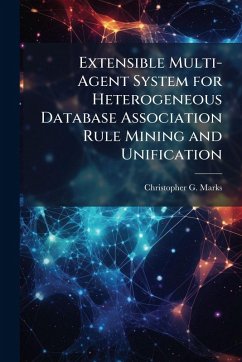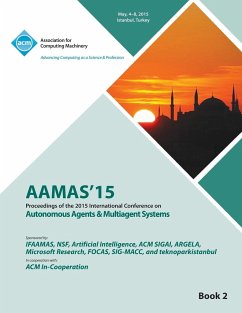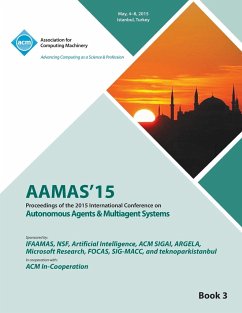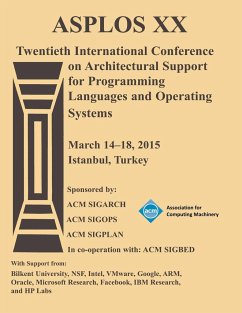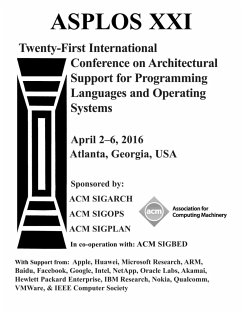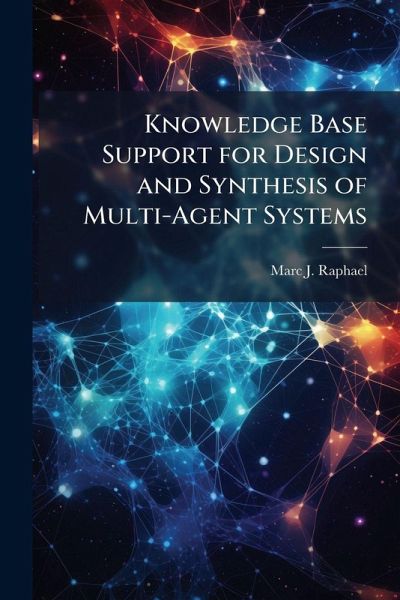
Knowledge Base Support for Design and Synthesis of Multi-Agent Systems
Versandkostenfrei!
Versandfertig in über 4 Wochen
17,99 €
inkl. MwSt.
Weitere Ausgaben:

PAYBACK Punkte
9 °P sammeln!
Agent Tool is an AFIT-produced, AFOSR-sponsored multi-agent system (MAS) development tool intended for production of MASs that meet military requirements. This research focuses on enabling MAS design and synthesis tools like agent Tool to store, retrieve, and filter persistent, reusable, and reliable agent domain knowledge. This "enabling" is vital if such tools are expected to produce consistent, maintainable, and verifiable agent applications on short timetables. Enabling requires: 1) modeling the agent knowledge domain, 2) designing and employing a persistent knowledge base, and 3) bridging...
Agent Tool is an AFIT-produced, AFOSR-sponsored multi-agent system (MAS) development tool intended for production of MASs that meet military requirements. This research focuses on enabling MAS design and synthesis tools like agent Tool to store, retrieve, and filter persistent, reusable, and reliable agent domain knowledge. This "enabling" is vital if such tools are expected to produce consistent, maintainable, and verifiable agent applications on short timetables. Enabling requires: 1) modeling the agent knowledge domain, 2) designing and employing a persistent knowledge base, and 3) bridging that domain model to the knowledgebase with an extensible domain interchange grammar. The achieved interchange grammar, called Multi-Agent Markup Language (MAML), is presented and shown to be capable of representing MAS design knowledge in a concise and easily parsed form that is readily stored and retrieved in the knowledge base. The selected knowledge base, called the Agent Random-Access Meta-Structure (ARAMS), is shown to support MAML and operate in a distributed environment that permits sharing of agent development knowledge between various tools and tool instances. Tests of MAML and ARAMS with agent Tool are summarized, and related future work suggested. This work has been selected by scholars as being culturally important, and is part of the knowledge base of civilization as we know it. This work was reproduced from the original artifact, and remains as true to the original work as possible. Therefore, you will see the original copyright references, library stamps (as most of these works have been housed in our most important libraries around the world), and other notations in the work. This work is in the public domain in the United States of America, and possibly other nations. Within the United States, you may freely copy and distribute this work, as no entity (individual or corporate) has a copyright on the body of the work. As a reproduction of a historical artifact, this work may contain missing or blurred pages, poor pictures, errant marks, etc. Scholars believe, and we concur, that this work is important enough to be preserved, reproduced, and made generally available to the public. We appreciate your support of the preservation process, and thank you for being an important part of keeping this knowledge alive and relevant.



